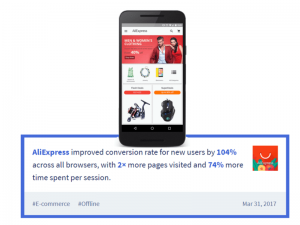Every eCommerce company is holding its breath and checking the shadows for what fright lurks in the supply chain. With the disruption in early 2020 still going strong through the end of 2021, there’s plenty of fear to go around. The spooky season coming right before peak season provides an interesting twist and a little insight this year for what we fear and how to respond. So, with Halloween on the brain, let’s look at six common mistakes that harm supply chains with a little bit of a spooky twist.

manfredrichter / Pixabay
Avoid last-minute costume ideas
Today’s supply chain lessons should start with emergency planning and the need to avoid picking your solution or plan at the last minute. Like a Halloween costume, you might get lucky and find or think of something unique that morning. However, most people who fail to plan will end up with something they don’t enjoy, or it doesn’t work right. Waiting until the last minute can upset your supply chain partners just as much as it does the person throwing a fun get-together.
Instead, take time right now to plan for emergencies. This might mean having on-site backups of data or partnering with a regional carrier to avoid disruptions. Can you use spare barcode scanners, or is there an available app if a handheld device breaks? Is it possible to stage goods or increase inventory now to avoid delays during the holiday crunch?
Brainstorm now to avoid issues down the road. This also ensures you’ve got time to let everyone know the plan and train your team on these alternatives. Inspiration might even bring you to something completely new, like dressing up as a container ship and building a plan for the Suez Canal blockage.
Lift the mask and communicate clearly
Whether it’s one of Michael Myers or an N95 mask, we’ve all learned that it can be hard to hear you in one if you’re not speaking loud and clear. Your supply chain is the exact same way. Inconsistent and unclear communications, or a lack of transparency in what you’re saying, can harm your business and hurt all your partners.
So, speak up and share. Create multiple ways you can communicate with customers and partners, especially during turbulent times. Be proactive now so that you have consistent paths when the unexpected arises. Regularly providing updates to customers on order and shipping statuses can help ensure they open your other emails. That means if carriers cut capacity or have issues at their sorting facilities, slowing down the delivery of orders, you can notify customers and get credit for that approach.
Lift the mask and let customers see who you are. Help them get to know you and understand you. It’ll build trust and prevent high cancel and return rates due to a shipping or supply chain experience.
Clear out the tech cobwebs
ECommerce businesses rely on a significant amount of technology when they begin. You’ve got a core eCommerce platform, payment gateways, supply chain and inventory platforms, and more. To make the most of this technology, everything needs to share data so you can easily track operations and spending.
Many eCommerce companies struggle with tech stack management as they grow. You’ve got plugins for every marketplace and shopping cart, integrations with carriers, new APIs, inventory tools, and much more. Bringing in someone to handle or outsource your web development and ongoing technology management may help your store avoid broken tech and lost sales.
Whether you keep things in-house or outsource, the tech stack needs to be reviewed regularly. Every update, new tool, or replacement can end up breaking an integration. Sometimes, it seems like things just break all on their own. Create a continual process to check your systems and integrations. Run through the entire checkout process to ensure it’s all working for customers and your service teams. When something breaks or doesn’t do what you need, clear it out and move to a solution that works for you.
Exercise those ghost assets
To sell products and fill orders, you need available inventory. Companies not only need systems to know what they have in stock, but these also must be accurate. If you’re not tracking and performing audits, you’re at risk of developing ghost assets.
Ghost assets are those either miscounted but not in your warehouse or ones you can’t use due to damage or theft, but they still show up in your inventory management system. They’re haunting your spreadsheets and aren’t available for order fulfillment. When you have enough, it can mean you’re not restocking in time and may have sold orders you can’t fill or experience stockouts that prevent new sales.
Address ghost assets and their zombie cousins (inventory that you do have but doesn’t show up in your system) by working with automated inventory tools. Look for platforms that help you count inbound goods by scanning barcodes. They should also have pick-and-pack operators scan each order to count usage. Finally, spot audits and other checks for events like inventory transfers should be built-in to help you stay on target.
Don’t get spooked by significant changes
So, when thinking of all this, remember that there are people under the costumes and running those haunted houses. We don’t have to get spooked by what’s new or those big changes. Think of them as new opportunities. Perhaps you might research how products preferences changed after COVID-19. Look at where new audiences might live and how they’re engaging with product categories. This covers everything from crazes like making sourdough bread at home to preference shifts or replacements, such as buying more home exercise equipment when gyms were closed.
Political events like Brexit also lead to dramatic shifts. UK shoppers and EU sellers have experienced fulfillment delays and concerns over VAT expenses. However, others that adapted to these changes have avoided some tax and logistics issues by opening warehouses and fulfillment hubs in the UK, or opening locations on Continental Europe for UK sellers.
All our supply chains are going to see disruptions this year and next. Spending habits and preferences will adapt as product availability shifts. And political shifts are likely to impact manufacturing hubs, import rules, and product cost. While it can feel scary, there are opportunities when you look at the big picture and are willing to get a little creative. Those two characteristics lead to some of the best Halloween costume ideas too.
Business & Finance Articles on Business 2 Community
(31)





